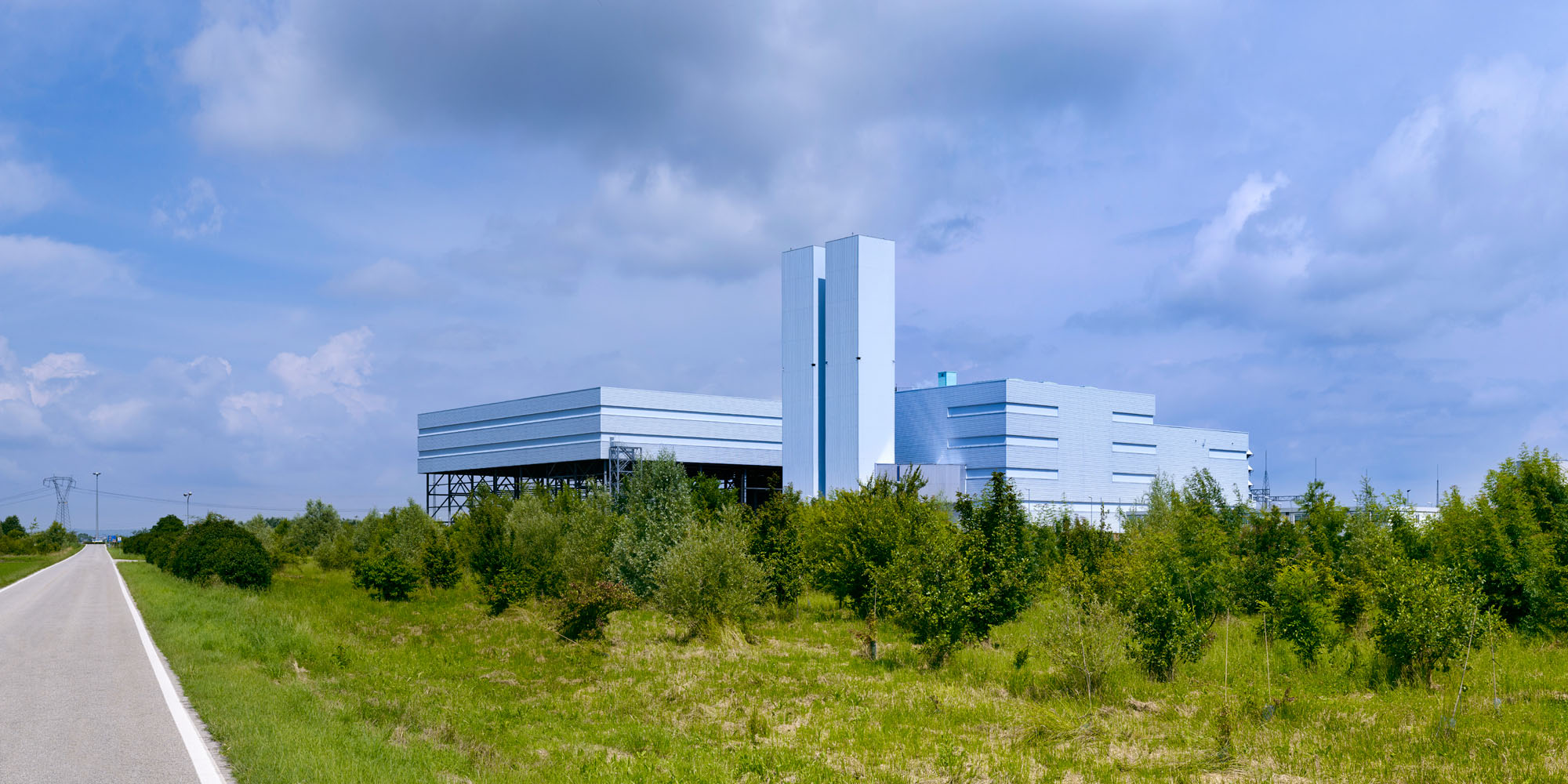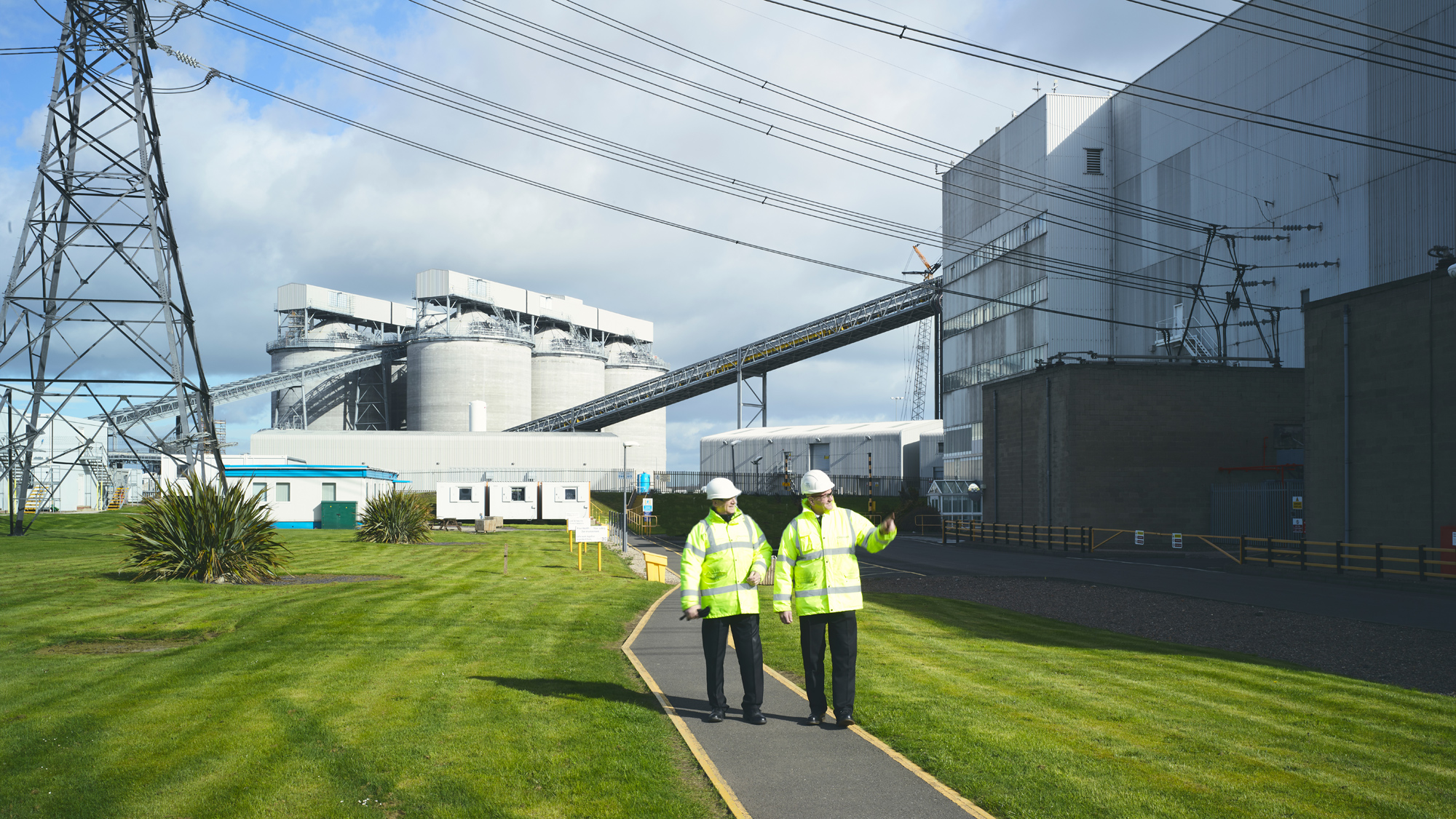EPH fully endorses the EU’s ambition to achieve climate neutrality by 2050, a cornerstone of the European Green Deal and in alignment with the goal of the Paris Agreement to limit global average temperature increase to well below 2°C above pre-industrial levels, while pursuing efforts to limit the temperature increase to 1.5°C. EPH is convinced that the development of the European energy system and the respective regulatory framework will continue to be guided by these long-term decarbonization objectives.
EPH’s approach to decarbonization
EPH aims to position itself as a key contributor to the energy transition. EPH has historically operated significant capacities of emission intensive assets and has already substantially reduced its carbon footprint through decommissioning or conversion of numerous coal power plants. In its emission reduction efforts, EPH has not relied on merely disposing of the most emission intensive assets but focused on real decommissioning or replacement of those assets through sources with lower carbon footprint. The key pillars of the EPH decarbonization strategy are:
Accelerated coal phase-out which often
goes beyond ambitions of national governments.
Provision of dispatchable gas capacities,
while ensuring their hydrogen readiness.
Maintenance and extension of emission-free
output from nuclear units.
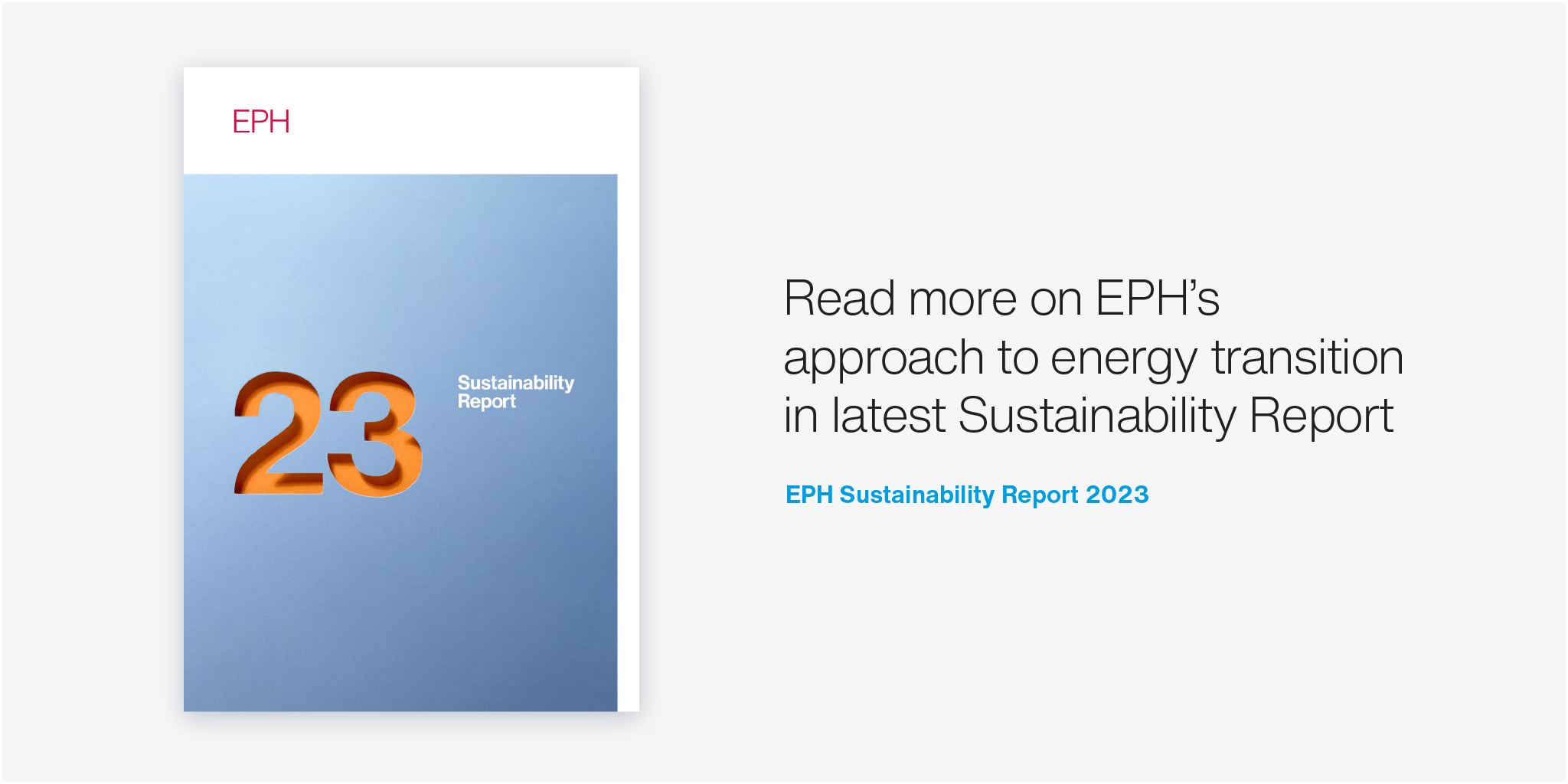
Coal phase out
EPH has a clear roadmap to phase out coal across its operations by 2030 at the latest, while striving to complete the coal exit earlier. Some of the closed coal power plants will be converted to sources with lower carbon footprint, like gas or biomass, while others will be gradually closed or spun-off into a separate entity outside of EPH Group. Beyond 2025, the remaining coal capacities within EPH shall be solely represented by the Fiume Santo power plant on the Sardinia Island operating under a must-run regime and cogeneration plants in the Czech Republic which provide vital supplies of heat. The projected development in the installed capacity is illustrated below.
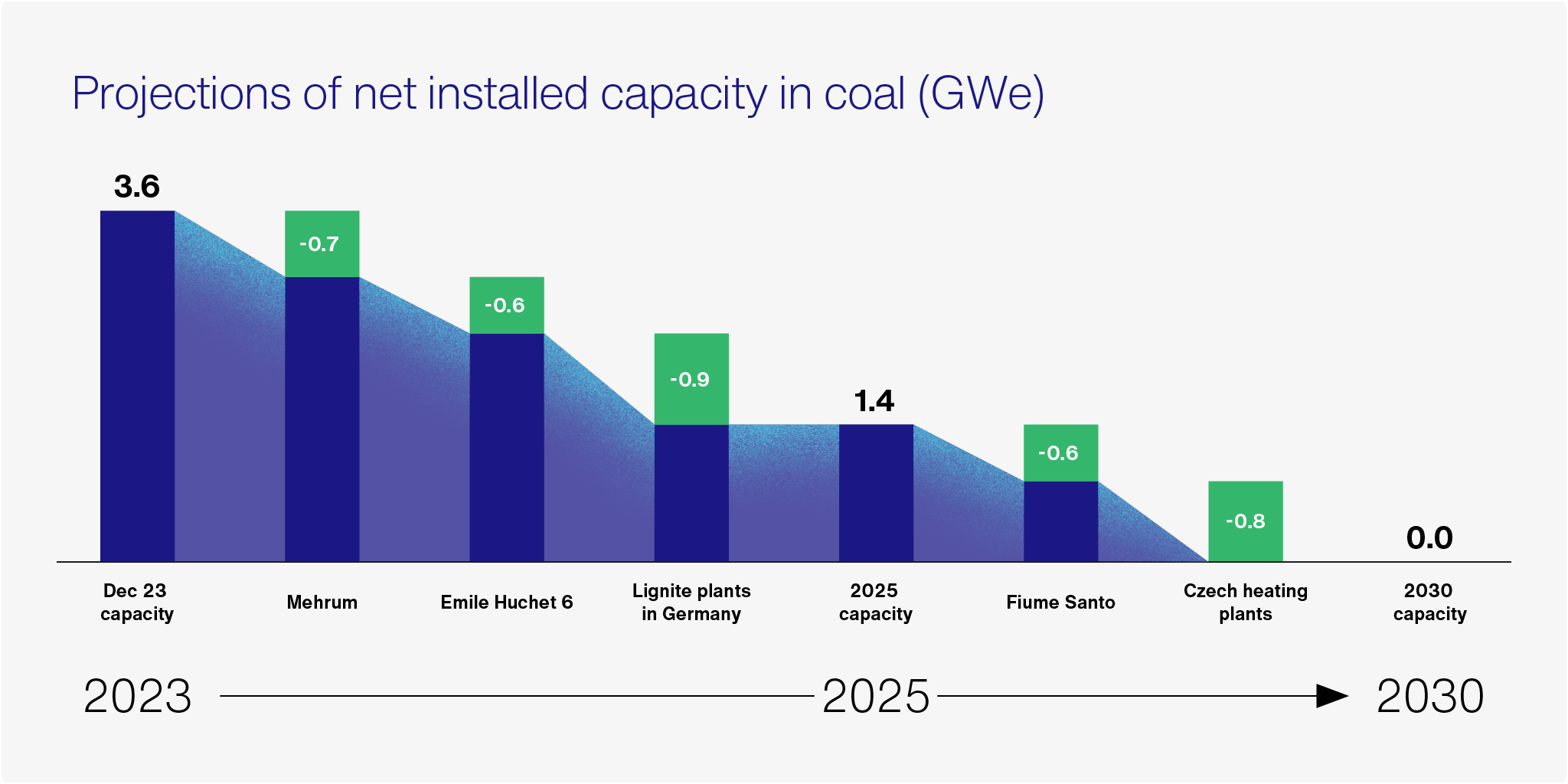
Role of gas power plants
The position of EPH in the energy transition is relatively unique in the European context compared to other large energy groups. EPH has been oriented at thermal dispatchable power generation dominated by gas power plants. EPH is of the view that highly efficient CCGT and OCGT[1] power plants ready to be switched to hydrogen are a key enabler of the swift transition to the energy system based predominantly on renewables. This view is supported by Net Zero Emissions by 2050 (NZE) Scenario of IEA[2], according to which natural gas-fired capacity remains a critical source of power system flexibility in many markets, particularly to address seasonal flexibility needs.
EPH is in the advanced development stage of three hydrogen-ready gas power plants: the Kilroot OCGT plant with a capacity of 700 MW in the UK, the Tavazzano CCGT plant with a capacity of 800 MW, and the Ostiglia CCGT plant with a capacity of 880 MW in Italy. All projects are supported by capacity contracts awarded for 10-15 years.
With growing penetration of renewables, the utilization of dispatchable gas power plants is expected to decline. After coal generation sources are phased out, gas power plants will be the last in the generation merit order, depending on their generation efficiency. By default, keeping those assets operational is not detrimental to the build-out of renewables which will always be fully utilized given their virtually zero marginal costs. Conversely, flexible gas power plants are a vital enabler of the acceleration of renewables ramp up. EPH projects to reduce full load hours of the power plants based on the efficiency of respective power plants and their useful lives.
Preparing the infrastructure for hydrogen
EPH recognizes the critical role of gas molecules in a resilient energy system that supports modern society. Understanding that natural gas only serves as a transitional fuel, EPH has begun readying its midstream and downstream gas assets for the future shaped by renewable gases.
Within the gas transit and storage segments, our projects aimed at hydrogen adoption have attained the status of Important Project of Common European Interest (IPCEI), bolstering the plan of our subsidiary eustream plan to enable the international transmission of clean hydrogen. Our subsidiary Nafta has launched project Henri to identify suitable sites for hydrogen storage. Obtaining IPCEI status opens a realistic pathway to securing grants from national or EU sources, moving the projects closer to realization.
Within the gas distribution segment, our subsidiary SPP-distribúcia is expected to be ahead of its European peers in hydrogen readiness due to its unique competitive advantages, namely its modern network consisting of a high share of polyethylene pipes which are resistant to hydrogen, and their permeability and safety characteristics are superior to steel. SPP-distribúcia already supports integration of renewable gases in its network by connecting the first biomethane stations and operating the registry of renewable gases in Slovakia.
Decarbonization targets
The primary objective when developing the EPH Group’s decarbonization goals and emission reduction pathways was to ensure alignment with scientific principles and the Paris Agreement’s aim to limit global warming to well below 2 degrees Celsius, while pursuing efforts to limit the temperature increase to no more than 1.5 degrees. To achieve this, EPH aimed to align its pathway with the Below 2 Degrees scenario of the Transition Pathway Initiative (“TPI”)[3]. EPH has introduced the following decarbonization targets:
Reduce CO2 emission intensity of its European power generation fleet in line with the Below 2 Degrees pathway of TPI by 2033
Phase out coal by 2030
Achieve net zero operations in respect of Scope 1 & 2 emissions by 2050
Reduce methane emissions in line with the Global Methane Pledge
EPH emission intensity reduction target is supported by an emission reduction pathway that has been developed for each generation asset. These asset-level pathways have been consolidated into a comprehensive pathway for the EPH Group. The key drivers of the projected emission intensity reduction between 2022 (baseline year) and 2033 (target year) are presented on the chart below. This projection provides adequate buffer compared to the threshold of 174 gCO2/kWh of the Below 2 Degrees pathway of TPI for potential further development of CCGT / OCGT units.
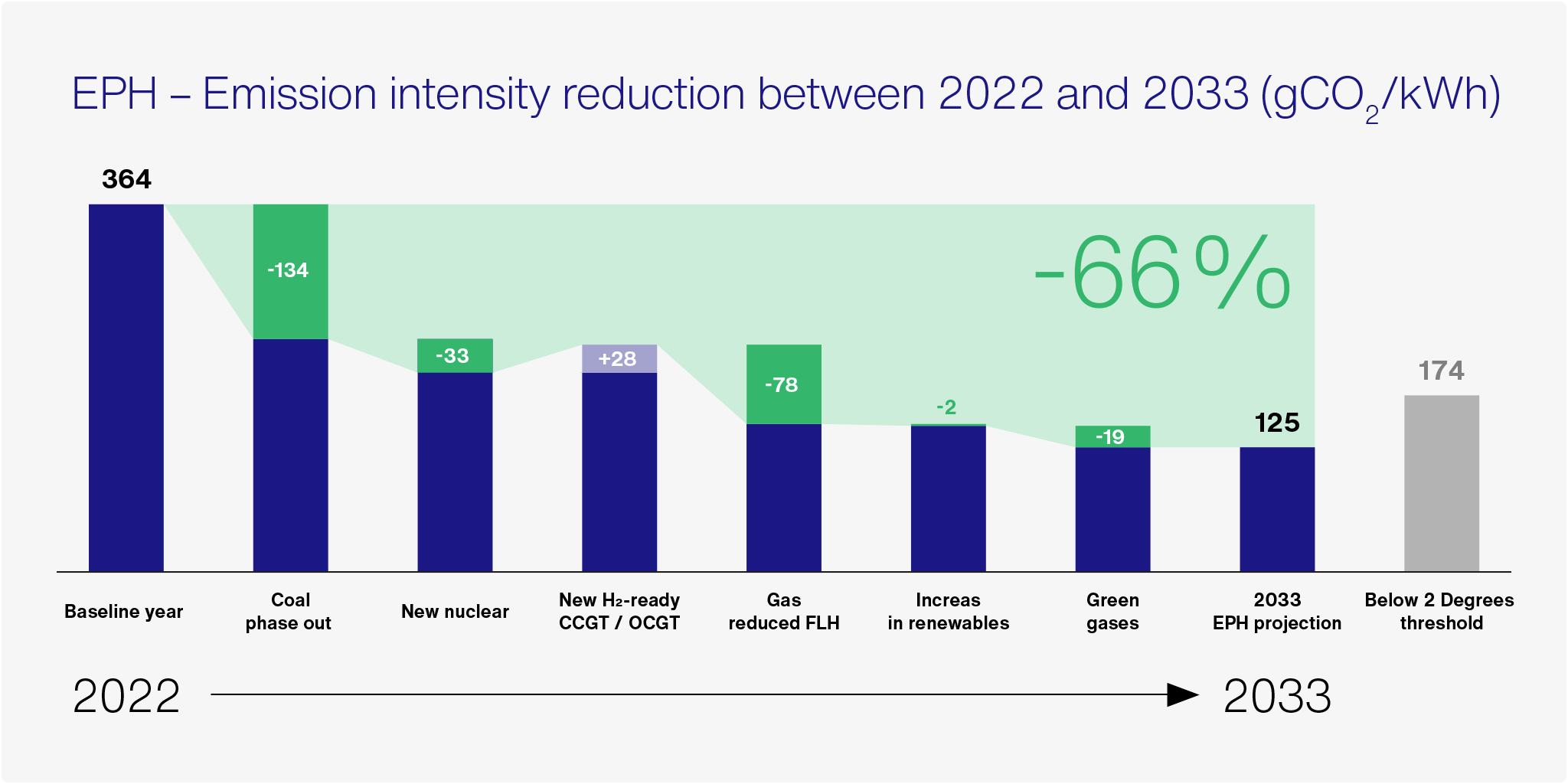
Decarbonization projects
EPH has a strong track record of closing and replacing coal power plants:
EPH converted the Lynemouth hard coal power station to biomass in 2016. The total cost of conversion was GBP 450m. This conversion saves approximately 2.7 million tons of CO2 emissions annually.
EPH decommissioned the Eggborough hard coal power plant in the UK (net installed capacity 1,960 MW). The plant was decommissioned in 2018, saving 11.5 million tons of CO2 emissions annually (compared to baseload operations in 2013).
EPH decommissioned the Buschhaus lignite plant in Germany in Helmstedter Revier (net installed capacity 352 MW). The plant was transferred into a security stand-by mechanism from October 2016 until September 2020 and then was finally decommissioned.
EPH decommissioned the Provence 5 hard coal power plant in France in April 2021 (net installed capacity 595 MW).
EPH converted several boilers from coal to biomass in 2021 at its heating plants in the Czech Republic. These are just the first steps in the plan to phase out coal in the Czech Republic and replace it with a balanced mix of hydrogen-ready CCGT units, waste incinerator plants and biomass units.
EPH decommissioned the Kilroot hard coal power plant in the Northern Ireland in September 2023. To replace vitally needed dispatchable capacities, a new OCGT unit is planned to be commissioned in the course of 2024.
EPH decommissioned the Mehrum hard coal power plant in March 2024. The plant was taken off the German merchant market in 2021 but was kept operational from 2022 following an emergency intervention of the German government in response to the energy crisis in Europe.
EPH also builds new dispatchable capacities.
